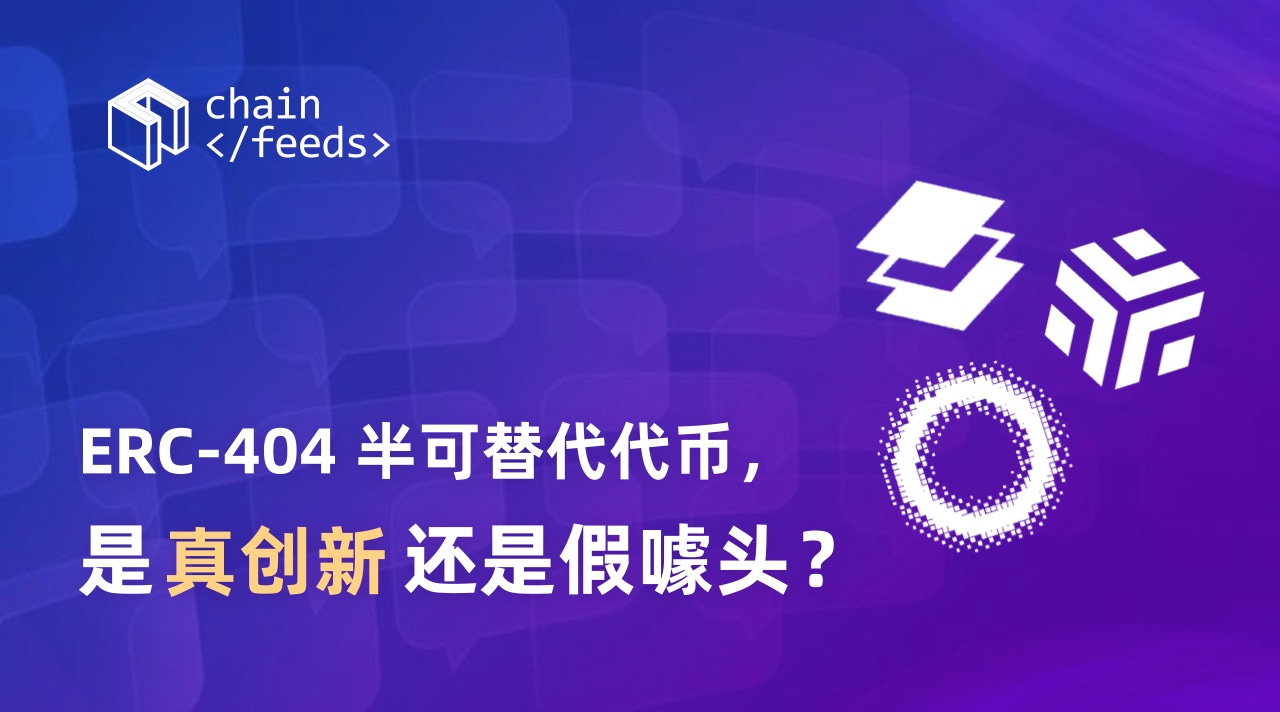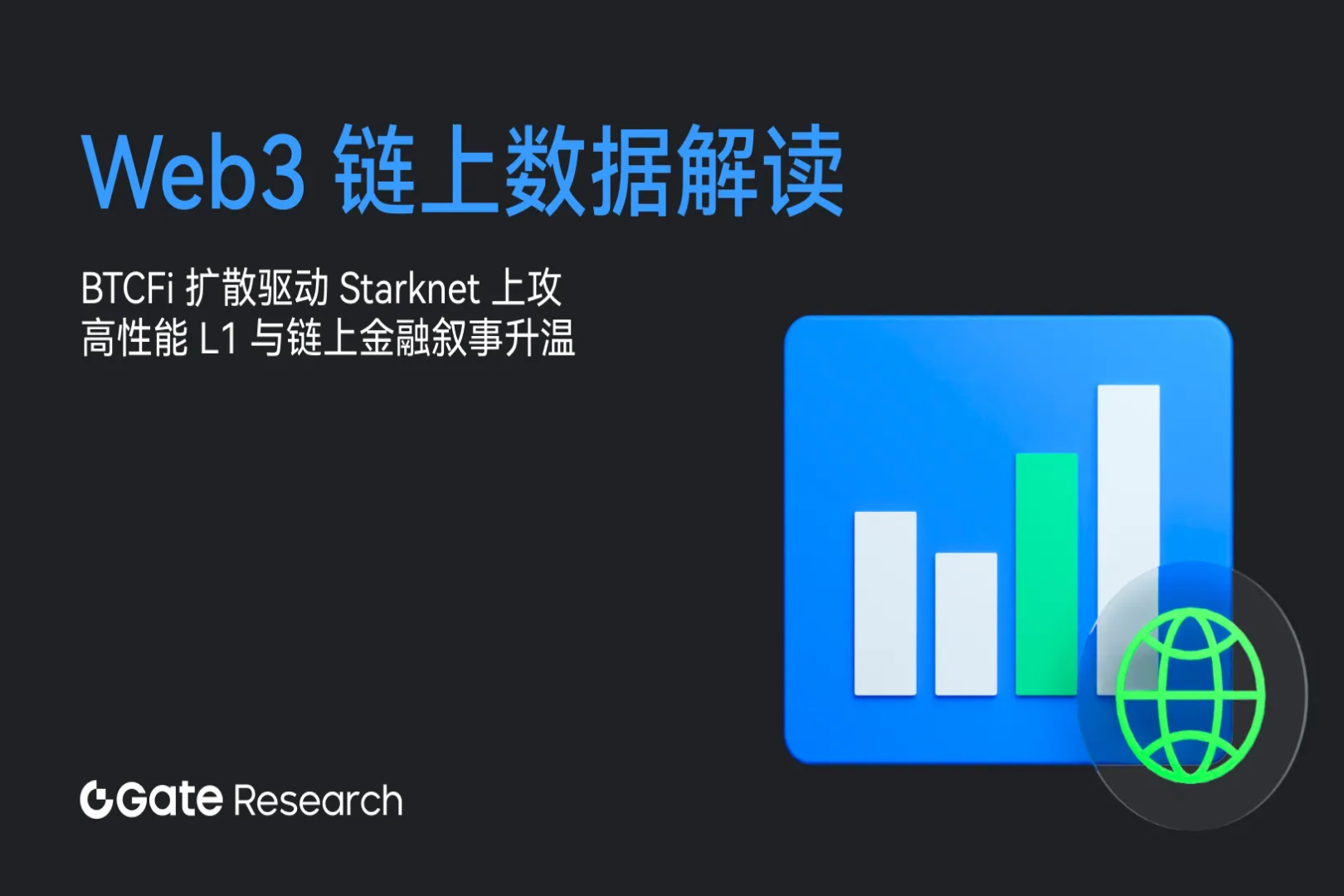ERC-404半可替代代币,是真创新还是假噱头?
ERC-404 has emerged. Pandora, OKX, Binance, and several other exchanges have all launched the ERC-404 section on their Web3 wallets.
ERC-404 Concept
ERC-404 is an experimental Ethereum token standard that aims to combine the characteristics of fungible tokens (such as ERC-20) and non-fungible tokens (such as ERC-721) to create a "semi-fungible token" that is both fungible and non-fungible. This token can exhibit fungible or non-fungible properties depending on its use case or purpose. It allows NFTs to be split and traded like ERC-20 tokens, with the dual properties of "image" and "currency".
To understand ERC-404, let's take the example of BAYC, Azuki, and other blue-chip artworks whose prices intimidate individual retail investors, especially those with rare attributes that are highly priced and illiquid. With ERC-404, these expensive NFTs can be directly split into tokens and traded directly on DEXs without waiting for buyers to place orders. The operation of ERC-404 is similar to splitting an image into multiple parts, allowing multiple people to collectively own a portion of the image.
Innovations of ERC-404
PANDORA is the first token based on the ERC-404 standard. Since its launch, the value of PANDORA has rapidly increased, with its token price surging from less than $5000 to over $23,000 within a short period, and its market cap approaching $200 million. This significant growth demonstrates the market's interest and potential confidence in this new standard. However, as an experimental standard, ERC-404 is still in its early adoption stage and is undergoing rigorous testing to ensure its robustness and reliability.
The innovations of ERC-404 can be summarized as follows:
Conditional fungibility: A key innovation of ERC-404 tokens is their conditional fungibility. This means that these tokens can function as fungible assets under specific conditions while behaving as non-fungible assets in other situations. This flexibility expands the token's applications and allows ERC-404 tokens to be more widely used in various blockchain applications.
Enhanced utility: By introducing semi-fungible tokens, ERC-404 enhances the utility of tokens, providing new token opportunities. This includes partial ownership of NFTs or dynamic assets that change over time. For example, an ERC-404 token can represent partial ownership of an artwork, allowing multiple users to share ownership of this valuable digital asset.
Increased market liquidity and lowered entry barriers: By allowing the splitting of NFTs, ERC-404 tokens contribute to improving liquidity in the NFT market and lowering the barriers faced by potential investors. This splitting mechanism makes high-value digital assets more accessible, attracting a wider audience to participate in the NFT market.
The process of token minting and burning: ERC-404 involves the process of token minting and burning, allowing for partial transfer of NFT ownership. When purchasing an ERC-404 token, an associated NFT is minted in the buyer's wallet. Similarly, when the wallet does not have enough coins for a complete token, the corresponding NFT is burned. When the wallet accumulates enough shares to form a complete token, a new NFT is automatically generated. This mechanism provides an innovative way for exchange and interaction with NFTs, increasing market activity and inclusivity.
Some may wonder, how does ERC-404 handle NFTs with rare attributes?
For NFTs with rare attributes, ERC-404 introduces an innovative handling method, with the Pandora project being a typical case. Under this framework, each ERC-404 token is bound to a unique Replicant box NFT with different rarity colors. When purchasing an ERC-404 token, the system randomly generates a box NFT associated with it, with different colors reflecting different levels of rarity. This not only increases the liquidity of NFTs but also provides buyers with a new way to increase the rarity of their collections by selling tokens and re-minting NFTs.
Specifically, ERC-404 also allows users to assess the rarity of the acquired NFTs after the initial token purchase and enhance their rarity by "re-drawing" the features of the NFT through transferring the token to a new wallet. This mechanism promotes token trading activities on DEX platforms and creates additional revenue opportunities for liquidity providers.
However, this mechanism of handling rare attributes also brings some challenges, such as how to maintain the value of rare NFTs during the re-minting process and how to balance the market demand and evaluation of NFTs with different levels of rarity. These considerations need to be addressed and balanced in the further development and implementation of the ERC-404 standard.
Limitations of ERC-404
Although ERC-404 provides many innovative application possibilities, it also faces some limitations and challenges.
Code risks: Auditing agency Beosin has conducted a detailed analysis of the design mechanism and contract code of ERC-404 v2, stating that although the v2 contract has added EIP-2612 support and improved token minting and burning logic, there are still risks: the whitelist function may bring centralization issues or possibilities of abuse; developers or users may make mistakes when calling transfer functions; there is still room for improvement in gas optimization; and there is a lack of emergency pause function. Therefore, the development team needs formal verification and manual audits from security experts to ensure that the code has no logical loopholes.
Lack of official recognition: ERC-404 is not an officially recognized token standard by Ethereum, which increases the risk as this standard has not undergone rigorous scrutiny through the EIP process. This process provides security, practicality, and compatibility guarantees through community discussions and reviews. Additionally, the experimental label of ERC-404 itself poses a risk. This status means that the standard is still in development and may undergo significant changes. Projects adopting ERC-404 may face challenges in adapting to these changes, resulting in instability or compatibility issues.
Potential exploit risks: A developer named "quit" proposed that if NFTs based on the ERC-404 standard are placed in lending protocols that are not appropriately adapted to their unique requirements, there may be a risk of NFT theft. This highlights the need for rigorous configuration and compatibility checks when integrating experimental standards into a wider ecosystem to prevent such vulnerabilities. Additionally, as the ERC-404 standard is informal and eager to be deployed, there may be a wave of non-innovative projects, rug pulls, and other malicious behaviors taking advantage of the hype around ERC-404.
Integration challenges: Integrating the features of fungible and non-fungible tokens in ERC-404 may pose difficulties for platforms and protocols built on existing standards. These obstacles could limit the efficiency and effectiveness of projects utilizing ERC-404.
Extensions based on ERC-404
1. PORTAL 404
PORTAL 404 is a project based on the ERC-404 v2 standard that introduces a series of portals with rich interactive interfaces to enhance user experience and simplify the transaction process. Although ERC-404 v2 introduces features such as high liquidity, fractionalization, and resets, the rapid development of this technology also brings new complexity and risks, such as managing multiple dApps and multiple interfaces, as well as uncertainty about which NFT will be destroyed or transferred. To address these challenges, PORTAL 404 introduces the ERC-5169 standard - calling the corresponding token frontend through token contract, i.e., providing token interfaces, supporting ERC-404 token holders to view complete data of NFTs, ERC-20, and ERC-721 associated with each token on the same interface, including balances, owners, market prices, contracts, etc., and allowing interaction with external contracts, such as increasing leverage through the Wasabi Protocol, conducting trade analysis using Candlestick, or monitoring trading pairs through the Floor Protocol.
In summary, the PORTAL 404 project provides advanced control and security for NFT and token holders by combining the ERC-404 and ERC-5169 standards.
2. DN-404
DN-404 is a complement and improvement to the ERC-404 standard, introduced by developers cygaar and quit, aiming to address the issue of rising Ethereum network fees caused by ERC-404. DN-404, known as "Divisible NFT-404," differs from ERC-404's attempt to merge NFT and token functionality in a single contract by using two separate contracts: a standard ERC-20 token and a mirrored ERC-721 NFT. The developers believe that this separation approach can mitigate potential security risks, adhere to established standards, and ultimately simplify the process. However, DN-404's code has not yet been audited, so there are inherent risks when using it.
The introduction of the DN 404 standard aims to address the efficiency issues of ERC-404. This newly proposed "divisible NFT" standard is intended to allow NFT holders to trade fractional parts of their NFTs with others. Developer cygaar explains on social media that their ultimate goal is to create an NFT standard with native fractionalization functionality.
3. Smart Layer
Previously, we conducted a detailed analysis and introduction of Smart Layer's TokenScript and ERC-5169: TokenScript is a programming interface specifically designed for tokenization by Smart Token Labs in 2019. This interface not only helps users access all token functionalities but also allows the creation of more advanced, complex, and flexible "user tokens" interactions. In order to enable tokens to interact with various services and applications in the Web3 ecosystem, Smart Token Labs introduced the Ethereum standard ERC-5169 in May 2022 (now in Final status). This standard introduces the concept of executable scripts, enabling tokens to carry their own logic and behavior, and possess stronger interaction capabilities. TokenScripts can then be embedded in tokens based on the ERC-5169 standard, allowing tokens to exhibit dynamic behavior when interacting with various services and platforms.
Smart Layer recently launched an upgraded version of the ERC-404 application. Based on ERC-404 V2, ERC-5169 and TokenScript are added to the ERC-404 token as the token front-end, helping users operate ERC-404 tokens more securely and conveniently, making transactions safer, frictionless, and further enhancing liquidity. Cryptocurrency researcher Haotian analyzed that, "Regarding Smart Layer, it actually has nothing to do with ERC-404, but instead, the goal of ERC-404 is to provide basic functionality for tokens corresponding to NFT images, while Smart Layer is a combination of ERC-5169 and TokenScript standards, essentially achieving programmable execution properties for FT tokens."
Summary of ERC-404
The ERC-404 standard brings new possibilities for token applications and liquidity by combining the characteristics of fungible and non-fungible tokens. With the launch and practice of tokens like PANDORA, the market's interest and potential confidence in this new standard have been significantly demonstrated, proving its potential in improving NFT market liquidity and reducing entry barriers. However, as an experimental standard, ERC-404 still faces many challenges and limitations, including code risks, lack of official recognition, and potential exploitation risks, all of which require the attention and caution of developers, investors, and users.
With the continuous development of technology and the gradual maturity of the market, we can expect ERC-404 and its derivative projects such as PORTAL 404 and Smart Layer to continue exploring and expanding the boundaries of tokenization. These innovations not only provide a richer interactive experience and investment opportunities for NFT and token holders, but also bring new vitality and potential for development to the entire blockchain ecosystem. In the future, as more projects adopt and optimize this standard, we may witness a major transformation in the field of blockchain tokenization, creating more value and opportunities for users and developers.



